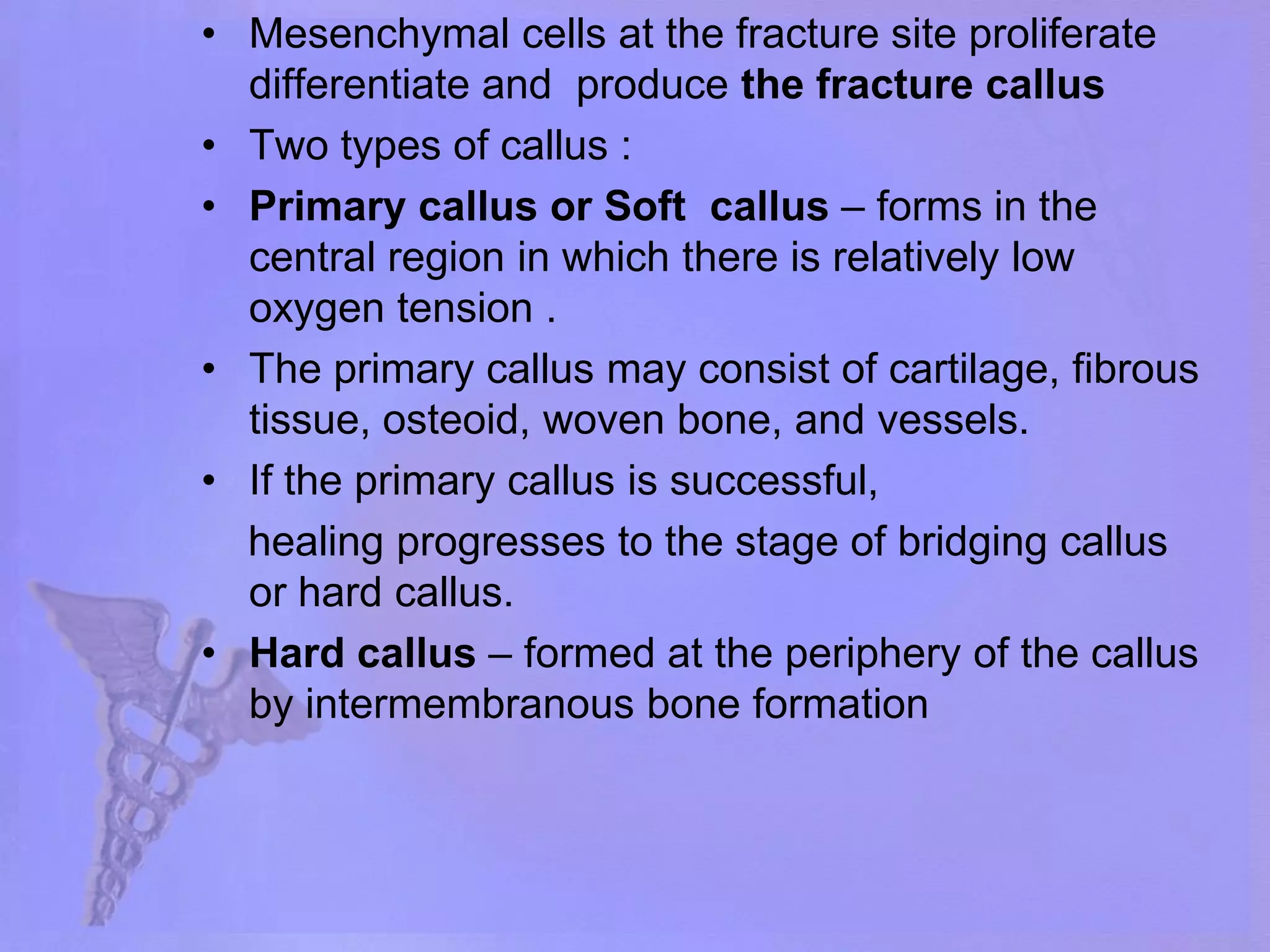This document discusses fracture healing and the underlying biological processes. It is divided into three phases: inflammation, repair, and remodeling. The inflammation phase occurs within the first week as the body clears debris. The repair phase over the next 2-3 months involves callus formation through intramembranous or endochondral ossification. During the remodeling phase, which can last years, the callus is reshaped into lamellar bone through cutting cones and modeling. Key cell types and growth factors that regulate healing are also described.













































































